Growing up in a Filipino household, I've always treasured our family's traditional recipes, but fried kamaru holds a special place in my heart. These crispy mole crickets might sound unusual to some, but they're a beloved delicacy in Pampanga where my grandmother was born.
I've perfected this recipe over years of practice, creating the perfect balance of garlic, salt, and that signature crunch that makes kamaru so addictive. The first time you try these golden-brown treats dipped in vinegar, you'll understand why generations of Filipinos have cherished this sustainable protein source.
Whether you're an adventurous eater looking to explore Filipino cuisine or someone reconnecting with their heritage, this simple yet flavorful dish will transport you straight to the provincial kitchens of the Philippines.
What is Kamaru?
Kamaru (mole crickets) are edible insects traditionally harvested in rice fields throughout parts of the Philippines, particularly in Pampanga province. Rich in protein and considered a delicacy, they're typically prepared fried with garlic and spices. Kamaru has been part of Filipino cuisine for generations and represents the resourcefulness and creativity of provincial cooking traditions.
Jump to:
Why You'll Love This Recipe
This authentic fried kamaru (mole crickets) recipe brings a delicious taste of Filipino provincial cuisine to your table. Crispy on the outside with a savory, nutty flavor inside, kamaru is a traditional delicacy in Pampanga and other regions of the Philippines.
This recipe celebrates sustainable protein that's been enjoyed for generations while offering a unique culinary adventure that's both nutritious and surprisingly delicious.
Ingredients
I've carefully chosen these ingredients to create the most authentic fried kamaru experience. Fresh kamaru forms the foundation, providing that distinctive nutty flavor and satisfying crunch. Garlic and fish sauce (patis) are essential Filipino flavor builders that enhance the natural taste of the kamaru without overpowering it.
The salt and pepper balance the seasoning perfectly, while the optional vinegar dipping sauce adds a tangy contrast that cuts through the richness. I've included red onion and green onions as optional garnishes because they add a pop of color and fresh flavor that completes the dish.
Each ingredient plays an important role in creating that perfect balance of savory, crispy goodness that makes this traditional delicacy so special.
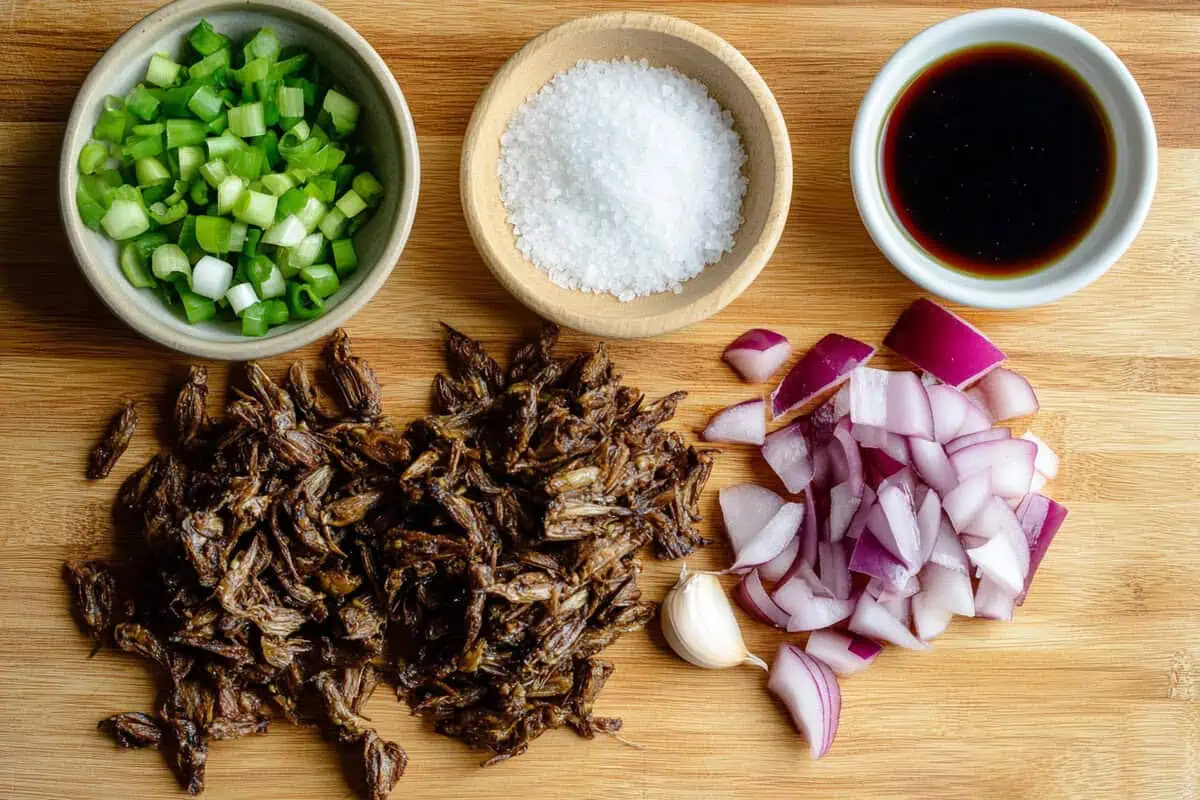
- 2 cups fresh kamaru (mole crickets), cleaned
- 4 cloves garlic, minced
- 1 tablespoon fish sauce (patis)
- 1 teaspoon salt
- ½ teaspoon ground black pepper
- 2 cups vegetable oil for frying
- 2 tablespoons vinegar (optional, for dipping)
- 1 small red onion, finely chopped (optional, for garnish)
- 2 tablespoons chopped green onions (optional, for garnish)
Equipment
- Large bowl for cleaning
- Colander or strainer
- Paper towels
- Deep frying pan or wok
- Slotted spoon
- Serving plate
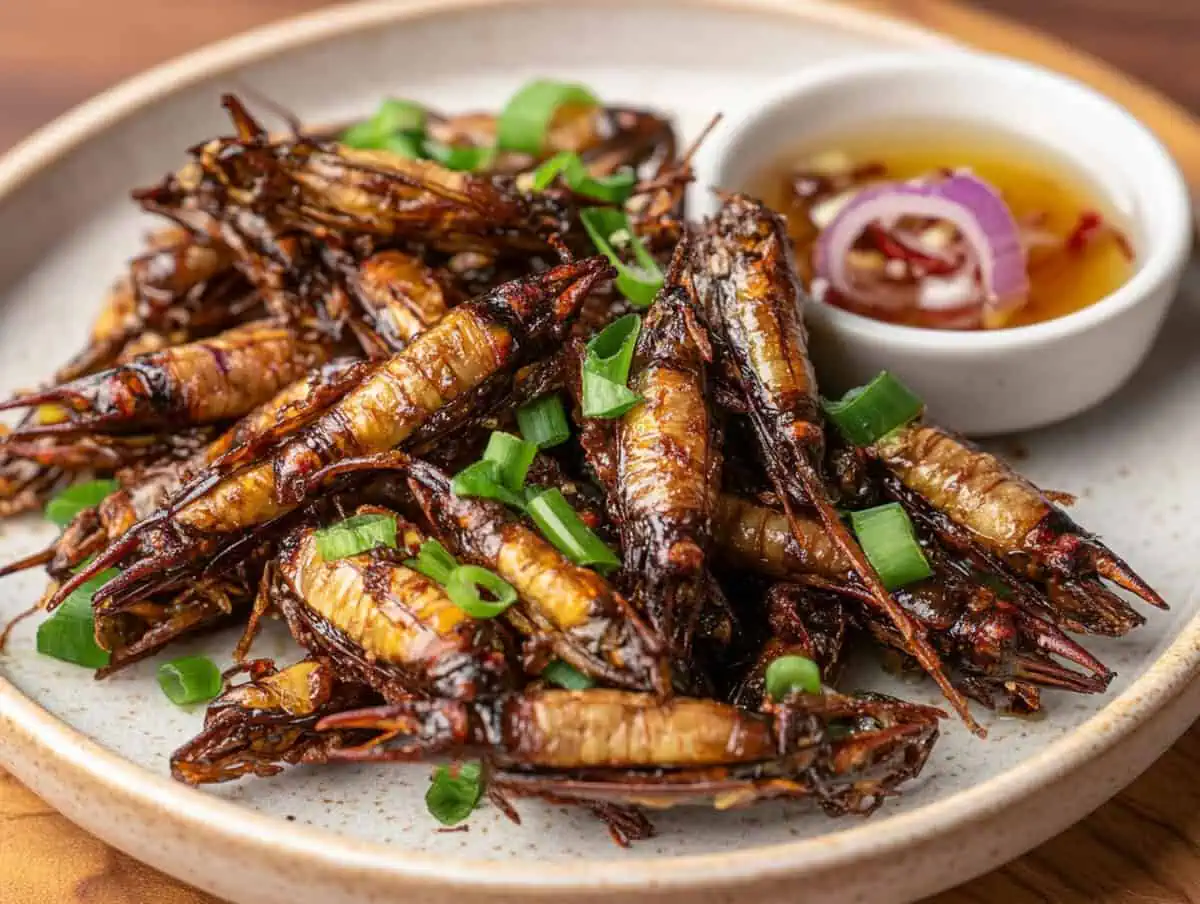
How To Make
- Clean the kamaru thoroughly by soaking them in water for 5-10 minutes, then draining and rinsing several times until the water runs clear.
- Pat the kamaru dry with paper towels.
- In a bowl, mix the cleaned kamaru with minced garlic, fish sauce, salt, and black pepper. Let marinate for 5 minutes.
- Heat oil in a deep frying pan or wok over medium-high heat until hot but not smoking.
- Carefully add the marinated kamaru to the hot oil and fry until crispy and golden brown, about 3-5 minutes.
- Using a slotted spoon, remove the fried kamaru and place them on paper towels to drain excess oil.
- Transfer to a serving plate and garnish with chopped onions and green onions if desired.
- Serve hot with vinegar dipping sauce if preferred.

Tips from Lola's Kitchen
- For the freshest flavor, try to cook kamaru the same day they're collected or purchased.
- The best kamaru are collected after rain when they come out of their burrows.
- Don't overcrowd the pan when frying - cook in batches if necessary for maximum crispiness.
- Add a pinch of chili flakes to the marinade for a spicy kick.
- A squeeze of calamansi juice just before serving adds a bright, citrusy flavor.
Substitutions
- If fresh kamaru isn't available, you can sometimes find dried kamaru that can be rehydrated.
- For a different flavor profile, try using soy sauce instead of fish sauce.
- Add a tablespoon of calamansi juice if vinegar isn't available for the dipping sauce.
- Coconut oil can be used instead of vegetable oil for a subtle coconut flavor.
Troubleshooting
- If kamaru aren't crispy: Make sure they're patted completely dry before frying and that your oil is hot enough.
- If they're too salty: Reduce the amount of fish sauce and salt in the marinade next time.
- If they're burning too quickly: Lower the heat and make sure the oil isn't too hot before adding the kamaru.
- If they're soggy: They might not be fresh enough or could be overcrowded in the pan during frying.
Storage & Reheating
- Store leftover fried kamaru in an airtight container in the refrigerator for up to 2 days.
- For best results, reheat in a dry pan over medium heat until warm and crispy again.
- Avoid microwaving as it will make them soggy.
- Fried kamaru are best enjoyed fresh, as they lose their crispiness over time.
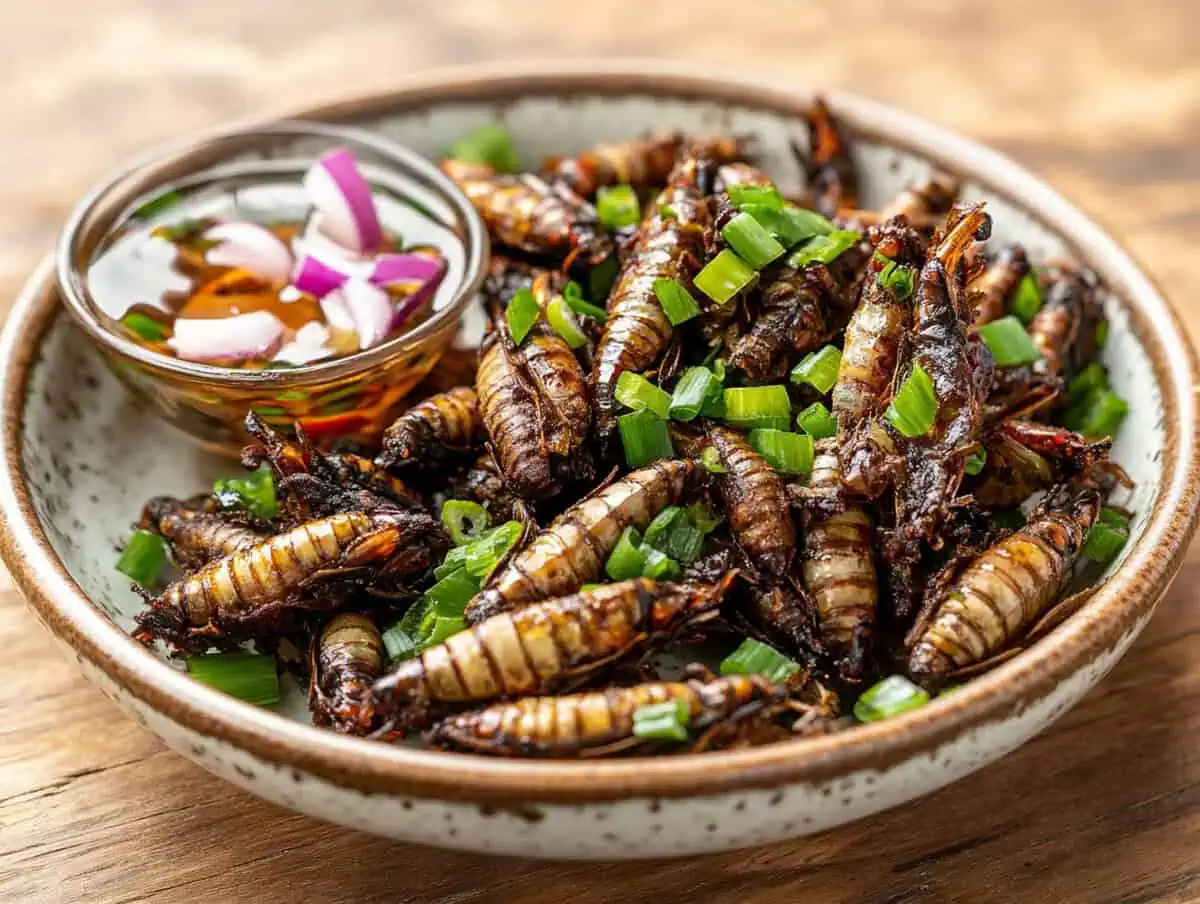
FAQ
Is kamaru healthy to eat?
Yes, kamaru is rich in protein, low in fat, and contains various minerals. Like many edible insects, it's considered a sustainable protein source.
Where can I find kamaru?
Kamaru can be found in wet markets in Pampanga and other provinces in the Philippines, particularly during rainy seasons. Some specialty Filipino stores may also carry dried versions.
Can I eat the whole kamaru?
Yes, the entire insect is edible after proper cleaning. The crunchy exoskeleton adds a pleasant texture.
What does kamaru taste like?
Kamaru has a nutty, slightly earthy flavor, somewhat similar to shrimp. When fried with garlic and spices, it takes on a savory, umami quality.
Can I prepare kamaru in advance for a party?
While best served immediately after frying, you can clean and marinate them a few hours in advance, keeping them refrigerated until ready to fry.
Related
Looking for other recipes like this? Try these:
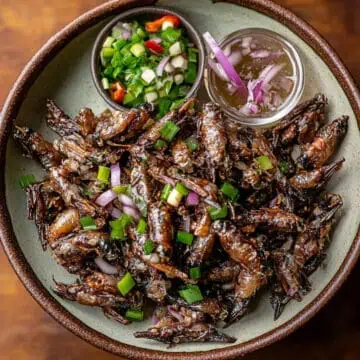
Fried Kamaru Recipe
Ingredients
- 2 cups fresh kamaru mole crickets, cleaned
- 4 cloves garlic minced
- 1 tablespoon fish sauce patis
- 1 teaspoon salt
- ½ teaspoon ground black pepper
- 2 cups vegetable oil for frying
- 2 tablespoons vinegar optional, for dipping
- 1 small red onion finely chopped (optional, for garnish)
- 2 tablespoons chopped green onions optional, for garnish
Instructions
- Clean the kamaru thoroughly by soaking them in water for 5-10 minutes, then draining and rinsing several times until the water runs clear.
- Pat the kamaru dry with paper towels.
- In a bowl, mix the cleaned kamaru with minced garlic, fish sauce, salt, and black pepper. Let marinate for 5 minutes.
- Heat oil in a deep frying pan or wok over medium-high heat until hot but not smoking.
- Carefully add the marinated kamaru to the hot oil and fry until crispy and golden brown, about 3-5 minutes.
- Using a slotted spoon, remove the fried kamaru and place them on paper towels to drain excess oil.
- Transfer to a serving plate and garnish with chopped onions and green onions if desired.
- Serve hot with vinegar dipping sauce if preferred.
Tips from Lola's Kitchen
- For the freshest flavor, try to cook kamaru the same day they're collected or purchased.
- The best kamaru are collected after rain when they come out of their burrows.
- Don't overcrowd the pan when frying - cook in batches if necessary for maximum crispiness.
- Add a pinch of chili flakes to the marinade for a spicy kick.
- A squeeze of calamansi juice just before serving adds a bright, citrusy flavor.
The Story Behind Fried Kamaru
Walking through the rice fields of Pampanga in the central Philippines, you might notice local farmers occasionally stopping to collect small insects from the muddy terrain. These are kamaru, or mole crickets, a traditional delicacy that has been part of Filipino cuisine for generations, particularly in the culinary capital of Pampanga province.
The practice of eating kamaru dates back centuries in the Philippines, where resourceful communities developed sustainable food practices long before "sustainability" became a global buzzword. During the rainy season, these protein-rich insects emerge from their burrows, making them easier to catch and creating a seasonal delicacy that coincides with the rice planting season.
What makes fried kamaru so special is not just its unique taste but its connection to Filipino agricultural heritage. Rice farmers would collect these crickets as an additional food source, creating a harmonious relationship between farming practices and culinary traditions. The kamaru were seen as both a pest control method and a protein supplement, showcasing the ingenuity of Filipino agricultural communities.
In Pampanga, known as the country's culinary heartland, fried kamaru became elevated from simple farmer's food to a celebrated regional specialty. Local cooks developed techniques to clean, season, and fry these insects to crispy perfection, often serving them as pulutan (appetizers) alongside cold beverages or as a side dish with steamed rice.
Today, as interest in sustainable eating and traditional food practices grows worldwide, kamaru represents more than just an unusual delicacy. It symbolizes the Filipino ability to create delicious dishes from locally available ingredients and the deep connection between food, land, and cultural identity. While some modern Filipino households might consider kamaru a relic of older culinary traditions, there's a renewed appreciation for these indigenous food practices that sustained communities for generations.
Whether you're a curious food enthusiast or someone exploring their Filipino heritage, fried kamaru offers a taste of authentic provincial cuisine that cannot be replicated. The distinctive nutty flavor, satisfying crunch, and rich cultural history make this humble dish much more than the sum of its parts – it's a edible piece of Filipino heritage that continues to be cherished and preserved by those who understand its significance.
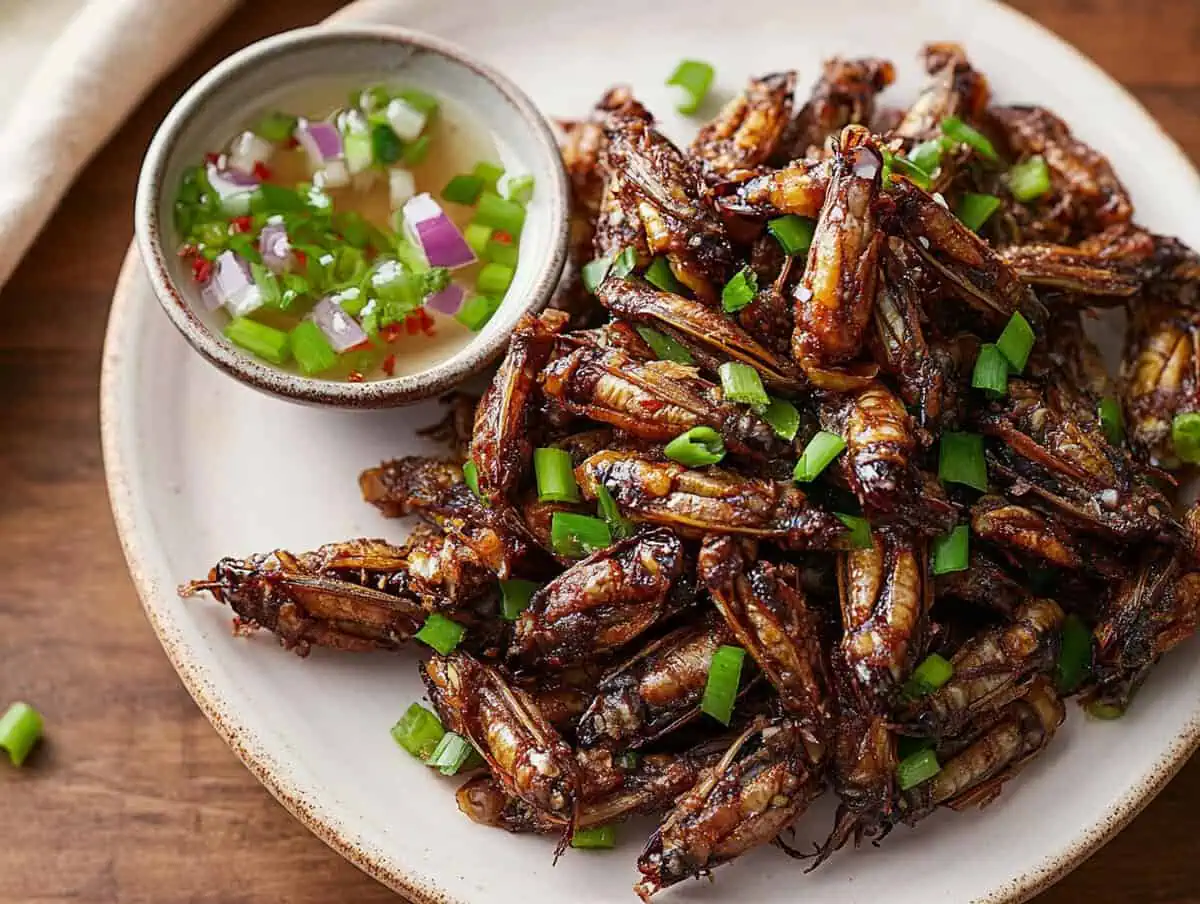





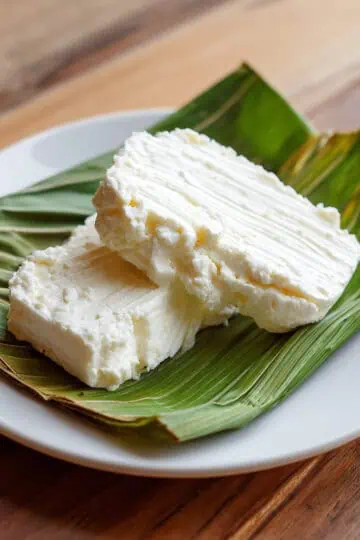
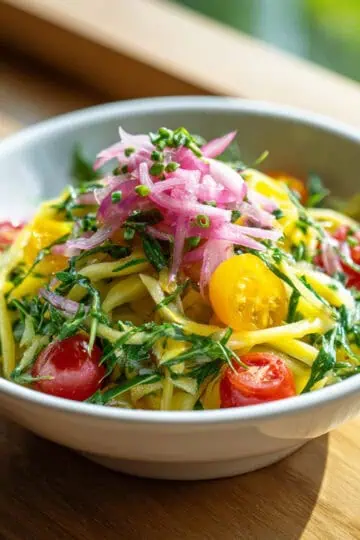
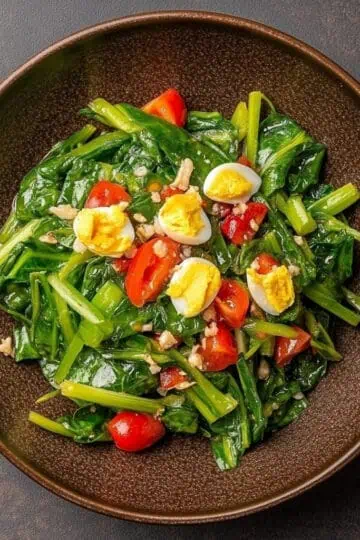

Comments
No Comments